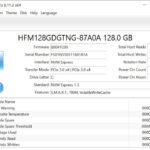Upgrading the instrument cluster in your BMW G30 from the standard 6WA to the advanced 6WB offers a significant visual and technological enhancement. This guide outlines a common retrofit process, highlighting potential challenges and solutions, specifically focusing on a 6WB unit sourced from a G11/G12 7-series (P/N 62108782630) installed in a G30 530e.
Common Challenges and Solutions During the Retrofit Process
The upgrade process typically involves using E-Sys 3.40 with v.4.36.12_PSdZData_Lite. After physically installing the 6WB cluster, the Vehicle Order (VO)/FA needs to be updated to include 6WB. Subsequently, calculate and write the FA to the vehicle. Since the G30 530e already has DKOMBI2 due to the existing 6WA, the next step is to code both the Head Unit (HU-NBT) and DKOMBI2 using the new FA.
While coding the HU-NBT usually proceeds without issues, coding DKOMBI2 might present a “CAFD file not found” error. This indicates a compatibility issue between the 6WB cluster (designed for a G11/G12) and the G30’s software. Attempting to detect a suitable CAFD for SWE within E-Sys might not yield a matching I-step level. While coding with a close CAFD might seemingly enable basic cluster functionality, critical information like service data and fuel level might be incorrect.
A common problem is an inaccurate fuel gauge reading, potentially displaying empty despite a full tank. This necessitates further adjustments. Exploring the original 6WA settings for fuel tank parameters and comparing them to the 6WB configuration might provide a solution. Matching or adjusting these settings could rectify the fuel gauge issue.
Furthermore, since the donor 6WB cluster originated from a European Union vehicle, the units displayed are likely in kilometers per hour (KPH). This can be easily adjusted to miles per hour (MPH) through the iDrive settings menu.
Addressing Fuel Tank Reading Errors
The discrepancy in fuel tank readings often stems from differing fuel tank sensor calibrations between the G30 and G11/G12 models. A detailed comparison of the fuel tank related parameters within the CAFD files for both the original 6WA and the new 6WB is crucial. Pinpointing and correcting the discrepancies in parameters like fuel tank capacity, sensor scaling, and low-fuel warning thresholds are essential for accurate fuel level display. Consulting online forums dedicated to BMW coding and retrofits can provide valuable insights and specific coding solutions for this issue.
Conclusion
Upgrading to the 6WB instrument cluster significantly enhances the driving experience in a BMW G30. However, careful consideration of software compatibility is vital for a successful retrofit. Addressing the potential fuel gauge inaccuracy through meticulous CAFD comparison and parameter adjustment is key. By understanding these potential challenges and their solutions, enthusiasts can confidently undertake this upgrade and enjoy the benefits of the modern 6WB cluster.

